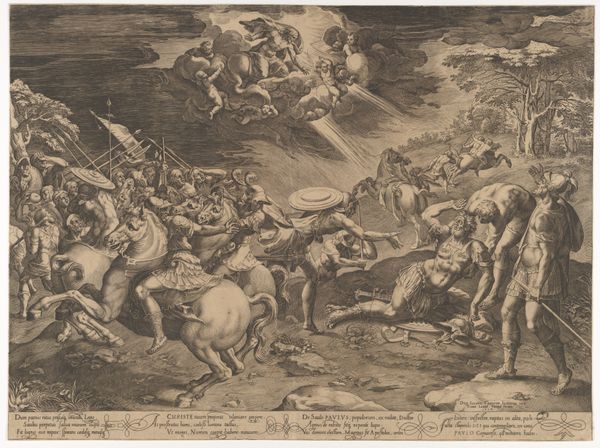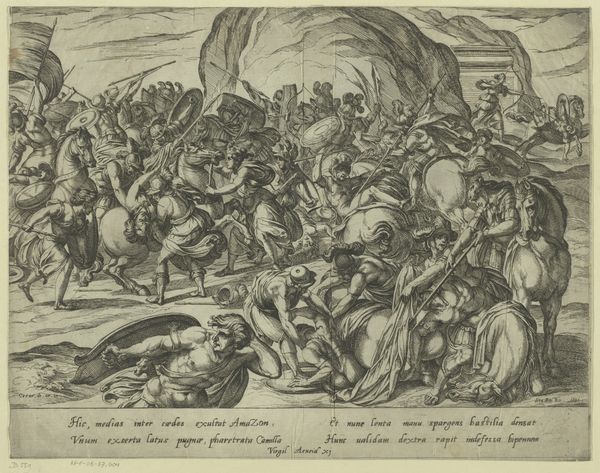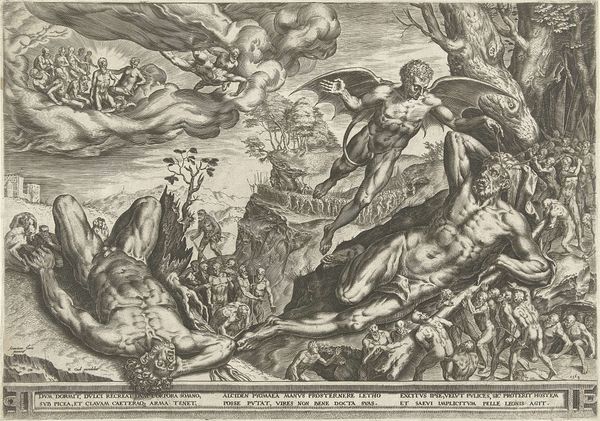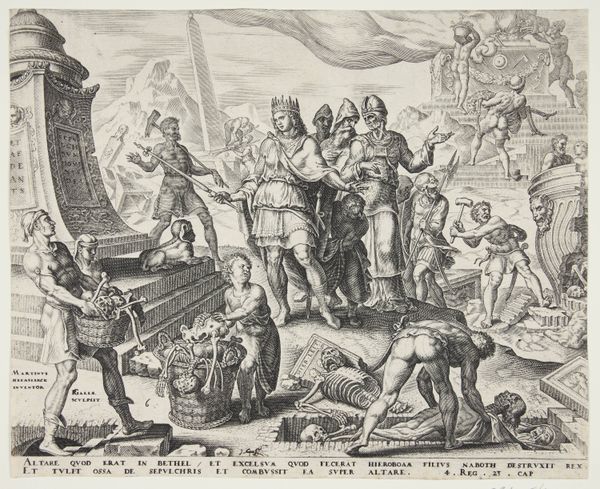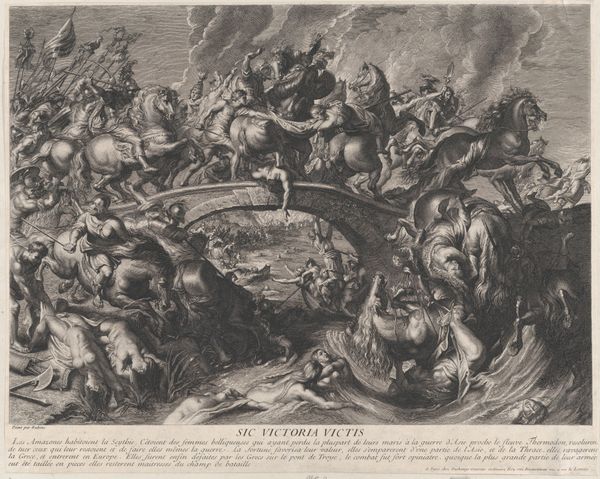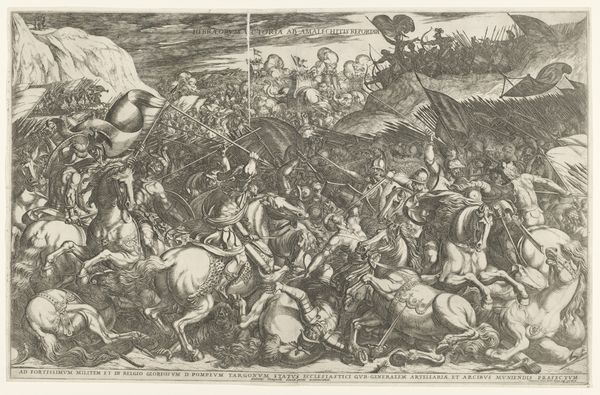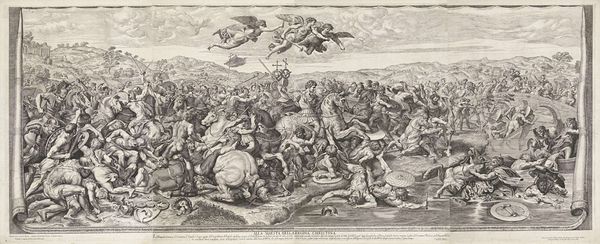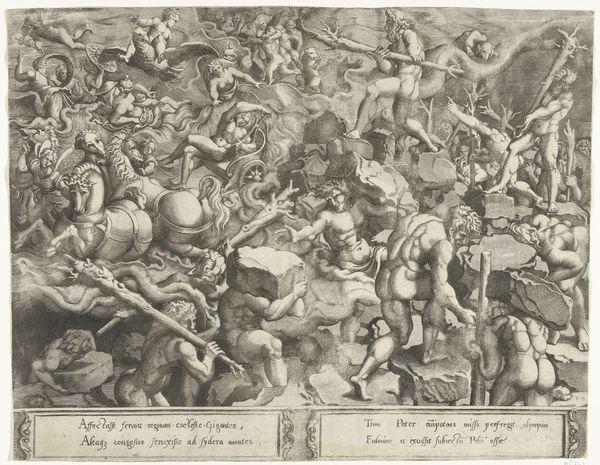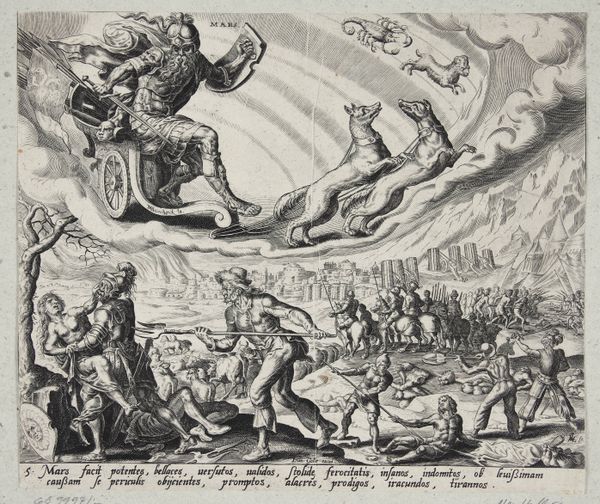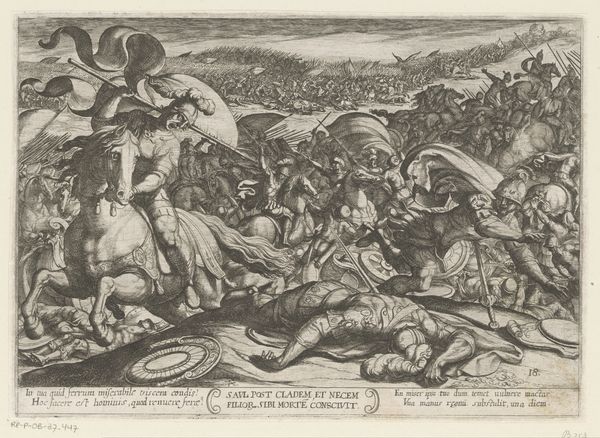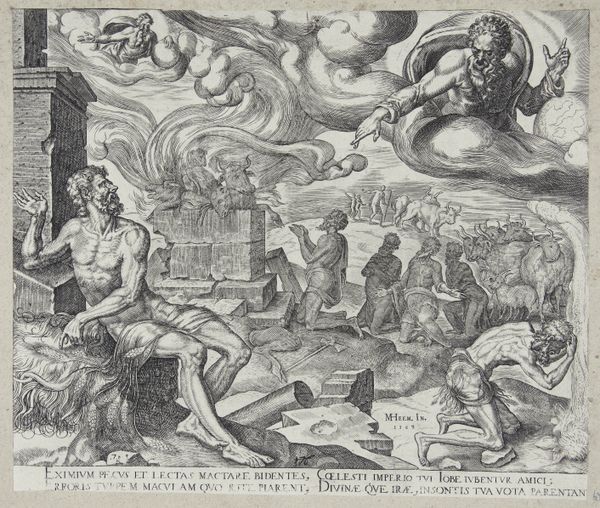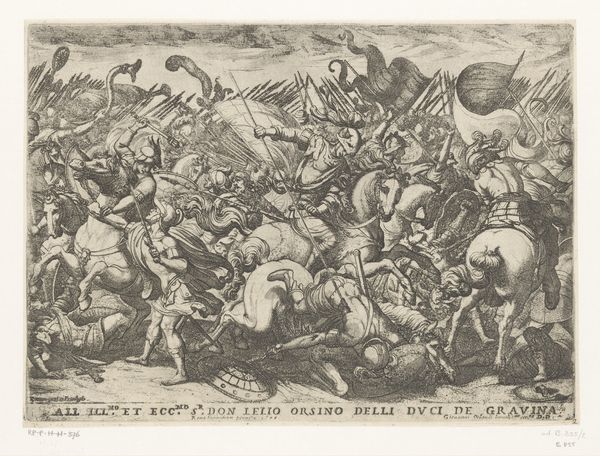
print, engraving
#
narrative-art
#
baroque
# print
#
figuration
#
line
#
history-painting
#
engraving
Dimensions: height 370 mm, width 481 mm
Copyright: Rijks Museum: Open Domain
Editor: Here we have "The Conversion of Paul," an engraving made before 1664, currently held in the Rijksmuseum. I’m immediately struck by how active the composition is – the chaotic scene of men and horses contrasted with the divine light in the upper right. What stands out to you? Curator: Considering the context of printmaking in the 17th century, I’m fascinated by the labour and materiality inherent in the production of this engraving. How was the dissemination of religious narratives impacted by this mode of mass production, challenging traditional, exclusive access to sacred stories? Who was consuming these images, and what role did such readily available, inexpensive art play in religious and social life at the time? Editor: So, you’re thinking about this less as an isolated artistic creation, and more as a mass-produced item affecting society? Curator: Exactly. Look at the technical skill involved in creating this image, then consider how that skill, that labor, was deployed. Engravings like this weren't just about depicting a biblical scene. They were about disseminating ideology and shaping public understanding. The very act of reproducing and distributing this image is significant. Did this increase religious awareness, or desensitize the public to the power of faith through over-consumption of imagery? What might an image like this one communicate about the social hierarchy when consumed across social stratifications? Editor: That’s a really interesting point. I hadn’t thought about how the act of printing and distributing an image itself creates new meaning. Curator: The line work itself speaks volumes. Consider the artist's process: etching away at the metal, a slow, laborious task repeated countless times to produce multiple impressions. That physical act, that exploitation of material, it’s essential to understanding the image’s meaning. It wasn’t just made to be beautiful; it was made to be multiplied and distributed to the masses. Editor: I now appreciate the level of distribution given the era; what seemed conventional now appears radically disruptive when mass produced for popular consumption. Curator: Exactly! And by acknowledging the context of materials, labour, and production, we gain a richer understanding of not just what the image depicts, but what it *does*.
Comments
No comments
Be the first to comment and join the conversation on the ultimate creative platform.
